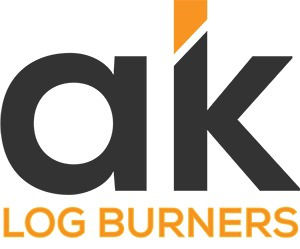HELP CENTER
The short answer is yes! There’s no legal reason why you can’t install a wood stove on your own. Skilled, dedicated, and experienced home improvers with time and energy to spare may deem it worth the effort in order to save a few hundred pounds on getting in a certified engineer.
That being said, just because you can legally install a stove yourself doesn’t mean it’s a good idea. In fact, our first and foremost recommendation would always be to have a HETAS engineer fit the stove and any accompanying flue systems, due to the risks and regulations involved.
Without the proper research, preparation, and execution, you leave yourself open to installing a faulty, potentially dangerous appliance, with all the financial and safety implications that entails.
1. Add kindling to a bed of ash: Grab a a generous handful of kindling and place at the bottom of your log burner. Ideally, place your kindling on a bed of ash that’s accumulated from previous log fires.
Why burn on a bed of ash? Ash acts as an insulator and helps to retain and distribute heat evenly – which helps to raise your log burner’s temperature more efficiently.
2. Open the Air Vents: Ensure the air vents are fully open to create sufficient air flow – an essential ingredient for firewood combustion.
1. Use a Wood Moisture Meter: Invest in a wood moisture meter to ensure the logs you’re using have a moisture content of around 20% or less. Logs sold with the Woodsure Ready To Burn logo, like ours, is the best trust signal to ensure your logs are ready for immediate use.
2. Regularly Clean the Burner: Empty the ash pan regularly to maintain good airflow from your appliance.
3. Monitor the Flue Temperature: You can use a flue thermometer to monitor the temperature of the flue gases. Aim for a temperature of around 250-450°C for the most efficient and clean burn.
4. Close the Air Vents When Not in Use: When you’re not using your log burner, close the air vents to prevent heat from escaping through the chimney.
PRO TIP: Keep your stove door slightly ajar when it’s not in use. That way, some room temperature air will draw up the flue and help it to stay warm and aid combustion when lighting.
1. Light the Firelighters: Ideally use a long lighters or matches to ignite the firelighters and nestle them into your nest of kindling.
Our natural firelighters dipped in natural paraffin wax are made from certified sustainably sourced wood wool and hold their flame long enough to get your fire blazing. And…they smell de-light-ful too!
2. Gradually Add Kiln Dried Softwood Logs: When the kindling is blazing away and the smoke is rising up the flue, add kiln dried softwood logs to build your fire up and raise your appliance’s temperature. Always start with smaller logs and add larger ones as your fire builds energy.
DID YOU KNOW… In cold weather, it’s harder to start a log fire: Log fires can be tricky to get going when it’s cold and damp outside. The reason is a phenomenon called “Cold Chimney Syndrome,” which happens because cold air gets stuck in the chimney, making it harder for your fire to draw air and burn effectively.
Solution: To fix this issue, take some extra time to warm up your stove before adding more logs. This ensures that the smoke rises up the chimney properly, making your fire building more effective.
2. Add Kiln Dried Hardwood Logs to sustain the burn: Once your log fire is roaring away and your stove’s temperature has reached around 300 degrees Celsius, add kiln dried hardwood logs to sustain the burn. This is when time and patience is key, because adding hardwood logs to an appliance that isn’t quite hot enough is a bit like trying to light a brick!
DID YOU KNOW? Even kiln dried hardwood logs will smoke and smoulder if your appliance hasn’t reached optimal combustion temperatures. Kiln dried logs will only combust in the right conditions.
TOP TIP: Buy a stove thermometer to gauge your log burner’s temperature
3. Keep an Eye on the Air Vents: Adjust the air vents as needed to control the fire’s intensity. Opening them wide allows for more oxygen and a hotter fire, while closing them slightly slows the burn rate. We suggest slowly closing down the air vents when your fire is well established and you’re ready to kick back, relax and enjoy that log fire you just built!
Have questions about our services? We're Here to Help
07882 337287
For easy access to our representatives, chat with us directly
